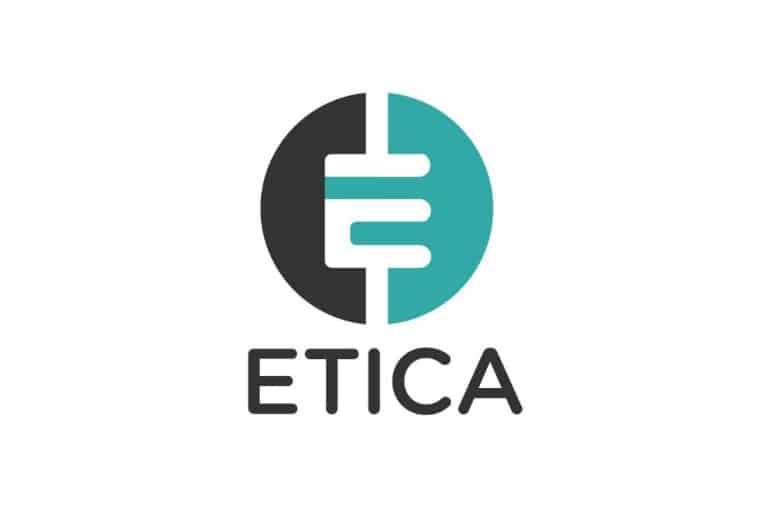Introduction
Binance is the largest cryptocurrency trading platform in the world.1 Because it offers a robust selection of trading options and features, it is not particularly user-friendly. Investors may experience a steep learning curve with Binance depending on their experience and knowledge.
Through its desktop or mobile dashboards, Binance offers a wide array of trading features, including an impressive selection of market charts and hundreds of cryptocurrencies. Users can also access a variety of trading options including futures and options, as well as several order types. However, many options and features are not available in the United States and only 65+ of the cryptocurrencies are accessible to U.S. customers.
In addition to its tools and features, Binance also offers a comprehensive learning platform, an NFT platform, and more. The NFT marketplace doesn’t appear to be available to U.S. customers yet.
Company Overview
Founded in 2017 by software developer Changpeng Zhao, Binance is a decentralized crypto exchange that was originally based in China.
While Binance is currently the largest cryptocurrency exchange in the world by trading volume, it’s also facing regulatory issues in several countries. In the United States, it’s currently under investigation by U.S. authorities on allegations of money laundering and tax offenses. The platform has also been banned in several countries.
Binance offers hundreds of cryptocurrencies for global users. However, it’s important to note that the global Binance platform is different from its U.S. counterpart, Binance.us, which only offers 65+ cryptocurrencies.
Experienced traders may appreciate the variety Binance offers, but users might find this platform confusing given its many features. Additionally, its ongoing investigations and growing list of regulatory issues are also concerning.
Pros Explained
- Over 65 tradable cryptocurrencies for U.S. customers: Binance offers over 65 tradable coins for U.S. customers. This gives crypto traders and investors many options. If you’re outside of the United States, you have even more options.
- Low fees: The platform offers low fees, meaning traders get to keep more of their investment and earnings.
- Wide selection of trading options and order types: Binance offers several trading options including peer-to-peer trading, spot trading, and margin trading. It also offers lots of order types, including limit order, market order, stop-limit order, stop market order, trailing stop order, post-only order, and one-cancels-the-other order. Some of these options including margin trading are not available for U.S. customers.
Cons Explained
- U.S. version is more limited: Binance offers hundreds of cryptocurrencies for trade globally. However, Binance.us, its platform for U.S. users, is more limited. Additionally, Binance.US is only available in 44 states.
- The platform is complex and may be confusing: While the broad range of features and trading options on Binance may be exciting, it can also be intimidating. Even experienced traders may feel overwhelmed by all the options available.
- No built-in digital wallet available: While some popular exchanges have built-in digital wallets, Binance does not. It recommends Trust Wallet, which has a good reputation but may only offer limited support if there are issues with Binance transfers.
- Binance has run into regulatory trouble in several countries: Binance has faced several regulatory and legal issues in multiple countries, so crypto investors may want to consider other exchanges.
Cryptocurrencies Available on Binance
Binance has more than 365 cryptocurrencies available for trade on its exchange, but only 65+ are available in the U.S. For international users, it also supports a variety of fiat currencies, including USD, EUR, AUD, GBP, HKD, and INR. Depending on your location, Binance has a wide variety of cryptocurrency pairs depending on your location.
Some of the cryptocurrencies available on Binance U.S. are Binance Coin (BNB), VeChain (VET), Harmony (ONE), VeThor Token (VTHO), Dogecoin (DOGE), and Matic Network (MATIC). Additionally, Binance supports popular cryptocurrencies including:
- Dash (DASH)
- Cosmos (ATOM)
- Compound (COMP)
- Bitcoin (BTC)
- Ethereum (ETH)
- Litecoin (LTC)
- Cardano (ADA)
Trading Experience
Binance offers a variety of trading tools, including real-time charting tools with moving averages and exponential moving averages. Users can place trades through the Binance app, Binance website, or Binance desktop app.
Traders can also use the Binance platform to access their portfolios and trade history, as well as view the order book and price charts. Additionally, Binance provides various order types such as stop order, limit order, stop-limit order, stop-market order, and trailing stop order. You can also choose different trading views ranging from classic to margin and OTC views. However, many of these features are unavailable in the U.S. including margin trading and some of the order types.
Binance doesn’t have its own dedicated crypto wallet, but it recommends Trust Wallet. Generally, a crypto wallet is a relatively secure place to store your assets.
Fees
Binance’s fees are among the lowest in the industry. While U.S.-based users will pay slightly more on Binance.us, its fees are still lower than what you’d see on other leading platforms. Binance employs a maker/taker fee structure, and fees vary based on trading volume and Binance Coin (BNB) balance. In general, higher volume trades are subject to lower fees.
Security
Binance’s security features include two-factor authentication (2FA) via the Google Authenticator app or short message service (SMS), address whitelisting, device management, and the ability to restrict device access. The Binance.us platform also provides FDIC insurance on all U.S. dollar balances.
While these features can help keep user accounts relatively secure, Binance’s reputation remains a cause for concern. Overall their security offerings are about average for the industry.
Opening a Binance Account
To open a Binance account, follow the steps below:
- Step 1: Visit the Binance website
- Step 2: Click on the “Get Started” button in the top right-hand corner and enter the required information. The registration process can take a few minutes, as Binance will verify your account information.
- Step 3: Enable 2FA
- Step 4: Link your payment method
- Step 5: Deposit funds and start trading
Customer Service
Binance offers three basic options for customer support: submitting a ticket, asking basic questions via chat, and reaching out via Twitter.
- To submit a ticket and receive email assistance, users can fill out a form on the Binance website.
- Binance has a Twitter account (@BinanceHelpDesk) for support and encourages users to tweet their issues to the company.
- There is also a chatbox on the bottom right corner of the support screen that can be accessed on the Binance website.
Customer Satisfaction
Binance averages just 2 out of 5 stars across more than 2,000 Trustpilot reviews. Several complaints revolve around poor customer service and difficulty withdrawing funds. However, even with the difficulties some users face, some feedback is positive. Many Binance users mention a favorable, relatively seamless experience with the platform.
Account Management
Users can access their Binance dashboard through a desktop browser or downloadable desktop application. It also offers mobile apps for iOS and Android that can be downloaded in the Apple and Google Play stores.
Binance’s dashboard allows you to view charts, marketing trends, your portfolio, and your current and past trades. To manage your payment types, simply navigate to the account page and add any credit/debit cards and bank accounts you’d like to trade with. Making deposits and withdrawals is simple and can be done by navigating to the “Spot Wallet”, selecting the asset you’d like to purchase or withdraw, and following the on-screen instructions.
How Binance Compares to Other Cryptocurrency Companies
Overall, Binance offers a wide range of supported assets and trading options for global traders, and its rates are also some of the lowest in the industry. While there are some positives about the platform, its compliance issues are a cause for concern.
If Binance doesn’t sound like the right option, you may want to consider Coinbase Pro, which is one of its primary competitors.
Binance vs. Coinbase Pro
Binance and Coinbase Pro are the two largest exchanges in the world. They also offer active traders versatility in trading options and assets. Here’s how the two platforms compare.
- Binance international supports more cryptocurrencies than Coinbase Pro, however, Binance U.S. supports fewer cryptocurrencies than Coinbase Pro
- Binance’s spot trading fees are lower than the maker-taker fees on Coinbase Pro
- Binance offers a rewards program for holding BUSD on its platform, while Coinbase Pro offers rewards for staking your digital assets on its platform
- Coinbase Pro users have access to a native digital wallet, while Binance users do not
- Coinbase is generally regarded as one of the most stable, secure cryptocurrency exchanges, while Binance has run into various issues with security and compliance
Both Binance and Coinbase Pro offer a sophisticated trading experience. While Binance has generally lower fees and more global trading options, the Binance.US platform is more limited with fewer options than Coinbase Pro, which could make Coinbase Pro a better choice for U.S. investors. Meanwhile, citizens of other countries may feel the opposite is true.
Additionally, while Binance’s fees are lower, they are also having compliance issues in other countries and are being investigated in the U.S. Coinbase has also run into recent issues with U.S. regulators, though the issues are less about the overall platform and more about its Lend program. Overall, Coinbase is regarded as a more stable, secure platform than Binance.
***



